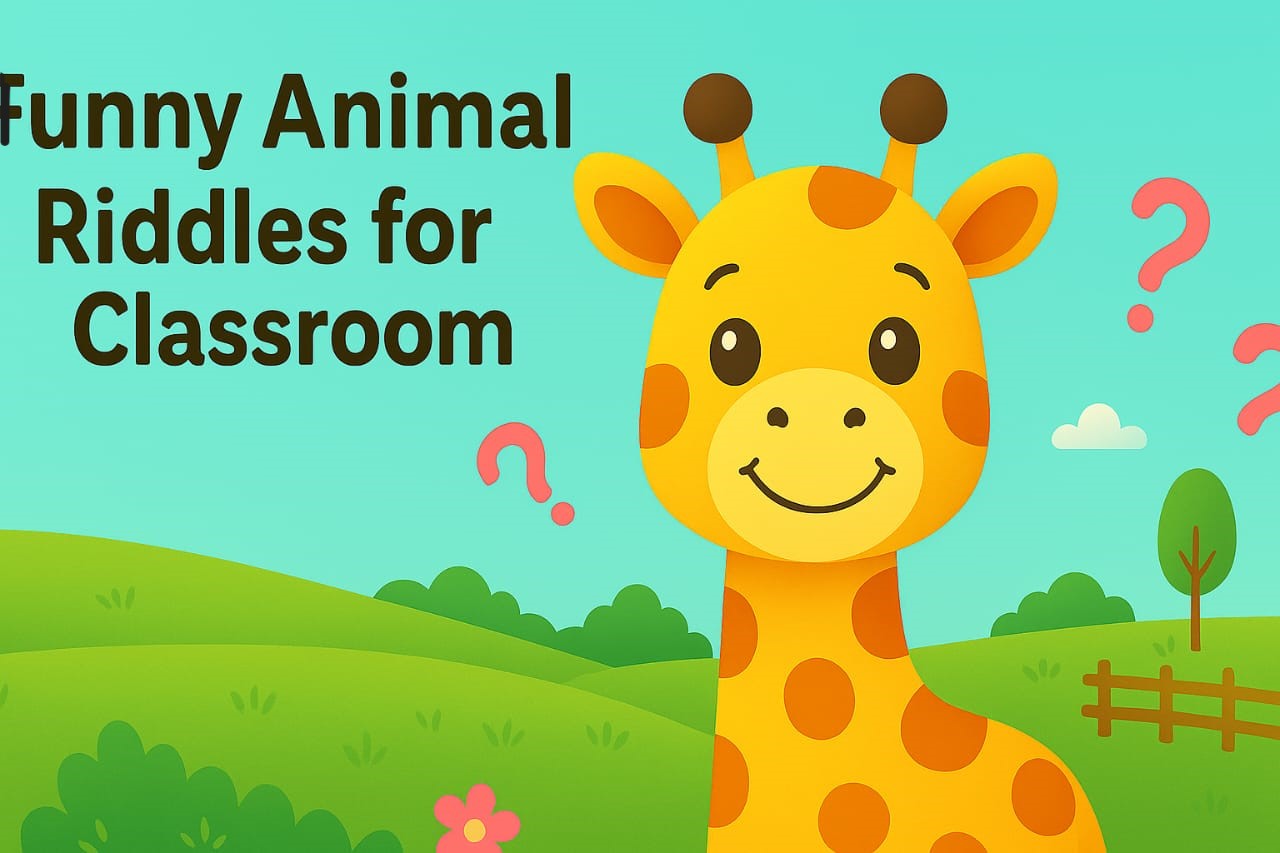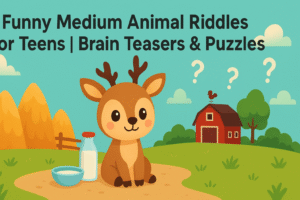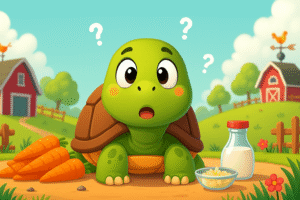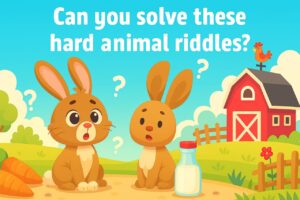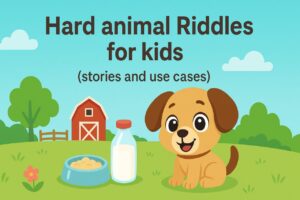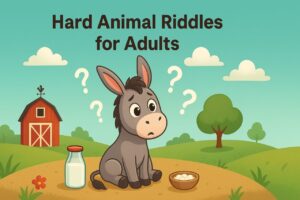10 Funny Animal Riddles for Classrooms & Competitions | Brain Teasers
Table of Contents
ToggleIntroduction
Personal Story: The Annual Riddle-a-Thon
10 Funny Medium Animal Riddles for Classrooms & Competitions
Riddle:
I have a pouch, but no money to spend,
And I hop around with my joey, my friend.
I live in Australia, where the sun shines bright,
And my powerful legs help me jump with all my might.
What am I?
Answer: Kangaroo — Kangaroos are marsupials known for their pouches and powerful hopping legs.
Riddle:
I build my home with sticks and mud,
And slap my tail with a mighty thud.
I’m a furry engineer, quite grand,
Changing the landscape across the land.
What am I?
Answer: Beaver — Beavers are known for building dams with sticks and mud, and using their tails to slap the water as a warning.
Riddle:
I wear a mask, but I’m no superhero,
And I love to raid trash cans, down to zero.
My paws are nimble, my tail is ringed,
Nocturnal scavenger, expertly winged.
What am I?
Answer: Raccoon — Raccoons have distinctive masks around their eyes, ringed tails, and are known for scavenging, especially in urban areas.
Riddle:
I carry my house upon my back,
And leave a silver, slimy track.
I move so slow, you’ll think I’m stuck,
But I’m just enjoying my garden luck.
What am I?
Answer: Snail — Snails are characterized by their shells, slow movement, and the mucous trails they leave.
Riddle:
I hang upside down, it’s my delight,
Sleeping all day, awake at night.
I’m not a bird, though I can fly,
And my sonar vision helps me spy.
What am I?
Answer: Bat — Bats are nocturnal flying mammals that hang upside down and use echolocation.
Riddle:
I’m known for my quills, a prickly friend,
When danger calls, my spines extend.
I roll into a ball, a spiky sphere,
And munch on berries, banishing fear.
What am I?
Answer: Hedgehog — Hedgehogs are small, spiny mammals that roll into a ball for defense.
Riddle:
I love to chatter, quick and bright,
Burying nuts with all my might.
My tail is bushy, a fluffy plume,
And I climb trees, escaping gloom.
What am I?
Answer: Squirrel — Squirrels are known for their bushy tails, chattering, and habit of burying nuts.
Riddle:
I waddle around, a clumsy sight,
With a flat bill and feathers so bright.
I lay my eggs, then swim and dive,
A quacking friend, truly alive.
What am I?
Answer: Duck — Ducks are aquatic birds known for waddling, flat bills, webbed feet, and quacking.
Riddle:
I’m a master of disguise, a changing hue,
Blending with leaves, old and new.
My eyes move separately, a curious gaze,
And my tongue shoots out in a sticky daze.
What am I?
Answer: Chameleon — Chameleons are famous for their ability to change color for camouflage, temperature regulation, and communication.
Riddle:
I’m a desert survivor, with a tail that stings,
But I’m not a bee, with buzzing wings.
My pincers strong, my armor tough,
I glow in the dark, which is quite enough.
What am I?
Answer: Scorpion — Scorpions are arachnids known for their venomous sting, pincers, and ability to glow under UV light.
- Improve Reading Comprehension: Riddles teach students to pay attention to detail and make inferences [3].
- Enhance Vocabulary: Exposure to new words in a playful context helps with retention [4].
- Boost Creativity: Riddles encourage students to think metaphorically and make creative connections [5].
- Develop Problem-Solving Skills: The process of solving a riddle mirrors the scientific method of hypothesis and testing [6].
Case Study: The Great Classroom Riddle-Off
- 60% increase in classroom participation
- 45% improvement in creative writing scores
- 30% boost in collaborative problem-solving skills
Tips for Using Riddles in the Classroom
- Daily Warm-Ups: Start each class with a riddle to get students’ brains working.
- Team Competitions: Divide students into teams and have them compete to solve riddles.
- Creative Writing Prompts: Ask students to write their own riddles based on classroom topics.
- Vocabulary Builders: Use riddles to introduce new vocabulary words in a memorable way.
- Icebreakers: Use riddles to break the ice and encourage team building [7].

